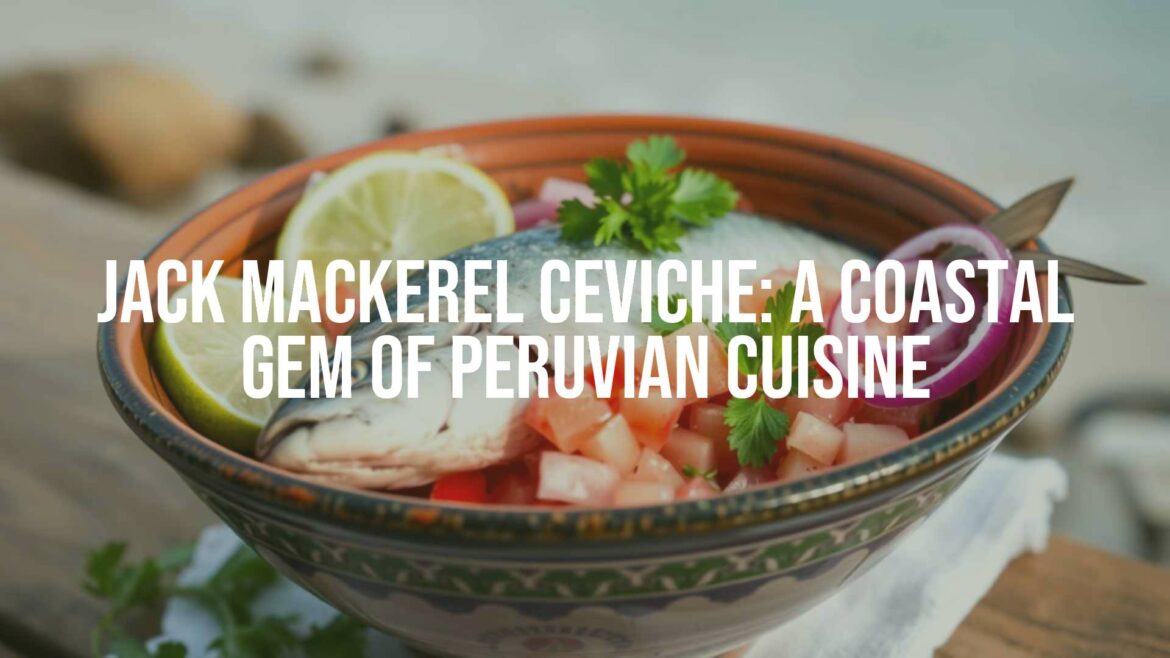Discovering Jack Mackerel Ceviche: A Coastal Gem of Peruvian Cuisine
An Overview of Jack Mackerel Ceviche
Jack mackerel ceviche, known locally as ceviche de jurel, exemplifies the vibrant flavors and culinary ingenuity of Peru’s coastal regions. Distinct among the wide variety of ceviches found throughout the country, this dish highlights jack mackerel—a fish prized for its firm texture and bold taste. Marinated in citrus and adorned with traditional Andean and coastal ingredients, jack mackerel ceviche offers a unique departure from the more internationally recognized versions made with white fish.
Origins and Evolution
The practice of preparing ceviche traces its roots back to ancient Peruvian civilizations, where fish was preserved in fermented fruit juices. When Spanish colonization introduced citrus fruits, most notably lime, the modern iteration of ceviche was born. Jack mackerel has long been accessible along Peru’s Pacific coastline, making it a natural choice for coastal communities. Over time, jack mackerel ceviche has become a staple in fishing towns and local markets, celebrated particularly during peak fishing seasons.
Flavor Profile and Visual Appeal
What distinguishes jack mackerel ceviche is its robust, slightly oily flavor complemented by the tang of freshly squeezed lime juice. The marination process “cooks” the fish, resulting in bite-sized pieces that are tender yet resilient, with a pleasant chew. The dish is a visual feast: jack mackerel’s deep flesh contrasts with bright red onions, fiery Peruvian chili peppers (ají limo or rocoto), and emerald cilantro. Garnishes of sweet potato, corn, and crispy cancha (toasted corn kernels) further enhance its appearance and texture.
Cultural and Regional Significance
Jack mackerel ceviche is especially cherished in Peru’s northern and central coastal regions, where the fish is abundant. It is not only a symbol of maritime heritage but also a testament to communal traditions—often served at beachside gatherings and family celebrations. Sharing this dish is seen as a way to honor the ocean’s bounty and the craftsmanship of local fishers. It has also become a popular option in cevicherías and street food stalls, appealing to those who seek heartier flavors compared to milder white fish ceviche.
Key Ingredients and Traditional Presentation
The principal ingredient, jack mackerel, is unique for its deep flavor and nutritional profile rich in omega-3 fatty acids. The marinade is classically Peruvian, featuring freshly squeezed lime juice, thinly sliced red onion, chopped cilantro, salt, and a generous touch of Peruvian chilis for heat and aroma. Occasionally, a dash of garlic or ginger is added for extra complexity. Traditional accompaniments include slices of boiled sweet potato, cooked Andean corn, and cancha, all served on a simple plate that allows the colors and freshness of the fish to shine.
Conclusion
Jack mackerel ceviche stands as an emblematic dish of the Peruvian coast, fusing bold flavors with local traditions. It offers a distinctive interpretation of ceviche, appealing to adventurous palates while honoring centuries of culinary evolution. For anyone seeking to deepen their appreciation of Peruvian cuisine, experiencing jack mackerel ceviche is both a flavorful and cultural delight.


